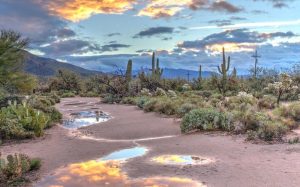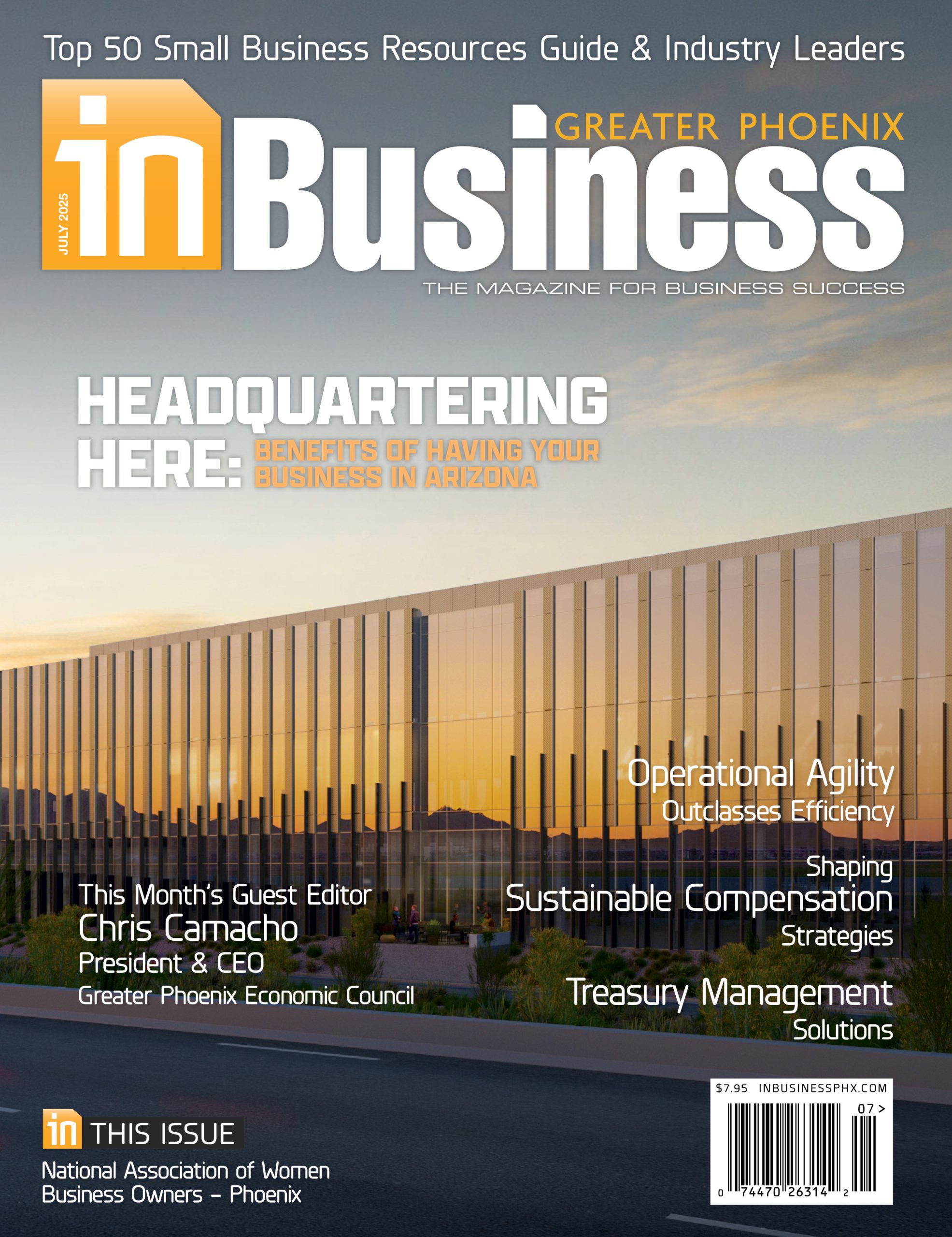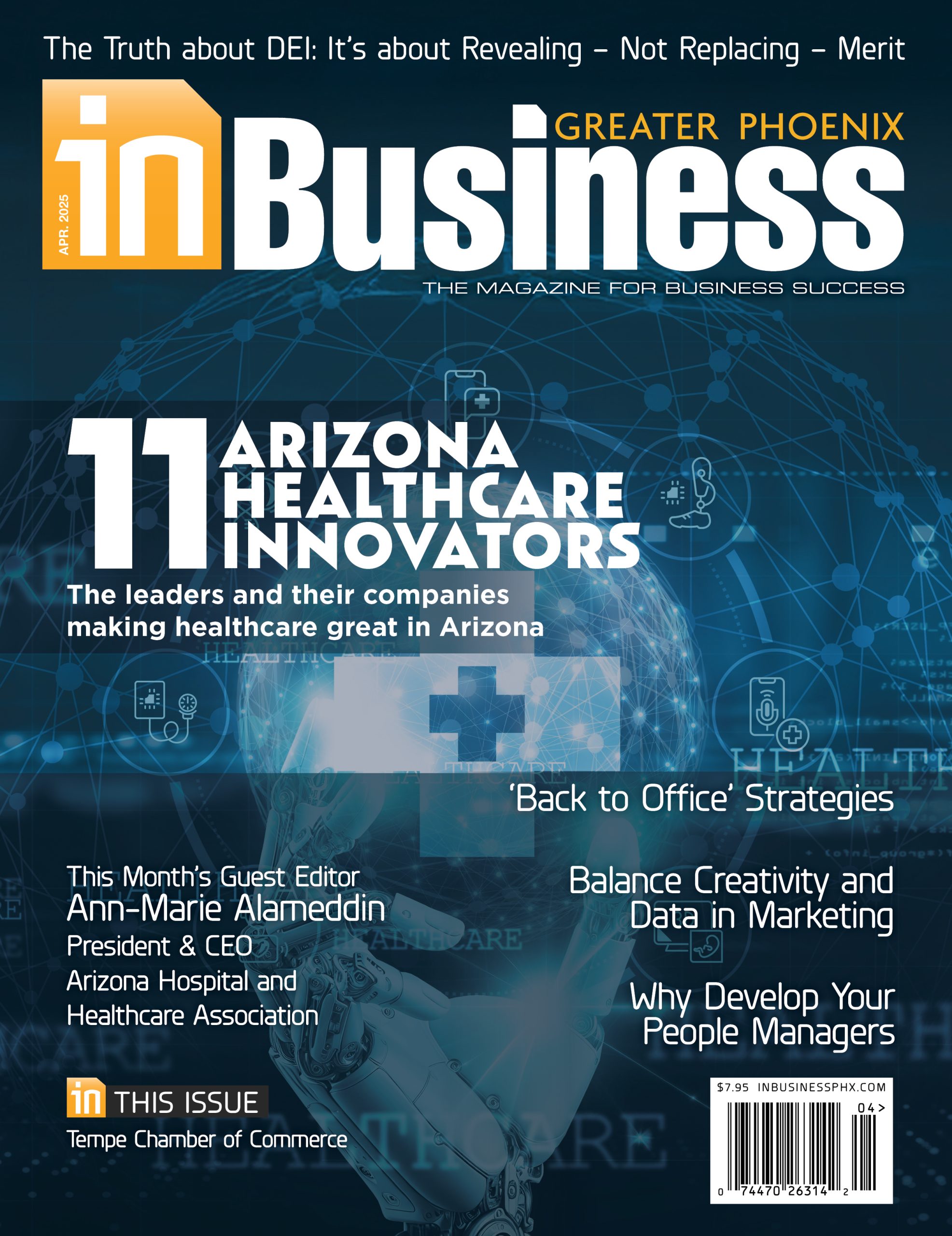As concerns about Arizona’s water future grow, the state’s public universities and the Arizona Board of Regents are offering solutions. The Regents’ Grant-funded Arizona Tri-University Recharge and Water Reliability Project is focused on enhancing groundwater recharge to sustain Arizona’s agriculture and ecosystems.
In partnership with the Arizona Department of Water Resources, Arizona State University, Northern Arizona University and the University of Arizona, the project is researching ways to capture precipitation and runoff before it evaporates to replenish the state’s aquifers. In Arizona, where annual precipitation averages just 12 inches, more than 95% of that water evaporates into the air or gets used by plants.
This initiative is a scientific foundation for water reliability as Arizona communities face prolonged drought and reduced Colorado River allocations. Landscapes are under unprecedented stress with low soil moisture, drought-stricken vegetation and heightened fire danger. Capturing even a small percentage of this lost water for aquifer recharge or direct use could help secure water for farms and families for generations.
“Water conservation is one of the most urgent challenges facing Arizona, and our universities are uniquely positioned to develop innovative solutions,” said Regent Fred DuVal. “By combining the deep expertise of our academic institutions with the real-world knowledge and implementation power of our state agencies, we’re building practical, forward-looking solutions that directly serve Arizona’s communities and secure our water future.”
Groundwater accounts for about 40% of Arizona’s water supply, yet monitoring it remains complex — especially in rural areas. ATUR’s research is helping to close this gap, offering data-driven methods to enhance recharge and protect aquifers. By uniting experts across disciplines and engaging stakeholders, the project ensures its solutions are both innovative and actionable.
The ATUR 2025 Summer Newsletter highlighted progress in the project’s first three years, including work from five subteams studying various environments and solutions — forests and natural environments, urban environment, recharge alteration/enhancement, hydroclimate, and stakeholder and partner engagement.
The project has mapped hydrologic and geologic conditions in Arizona’s groundwater basins, identifying high-potential recharge sites. The hydroclimate subteam is using modeling, machine learning and data analysis to improve water supply forecasting to support water planning. The stakeholder and partner engagement subteam has held more than 60 meetings and workshops with over 30 organizations to gather local insights and ensure solutions reflect community needs.
The project aligns with Gov. Katie Hobbs’ water conservation policies. Her Rural Groundwater Management Act empowers communities to protect aquifers, complementing ATUR’s recharge efforts in areas like the Willcox Basin, where groundwater has dropped by as much as 400 feet. In January, the governor’s office announced a $60.3 million investment in water conservation, advanced technology, infrastructure improvements and groundwater sustainability.
“Arizona’s water future depends on action today,” said Hobbs in her January statement. “I’m committed to making investments that protect water for every Arizonan and ensure our communities have the resources they need to continue growing for generations to come.”
Arizona’s public universities and ABOR are working with the state to develop unique solutions to urgent challenges through initiatives like ATUR and the board’s Future of Arizona series. The Future of Arizona convenings provide an exclusive, thought-provoking space for business and community leaders to explore the long-term outlook for key industries, emerging technologies and the role public universities can play in supporting the state’s transformation.
Water conservation was among the issues discussed at the board’s recent Future of Arizona convening, held in partnership with the Arizona Department of Agriculture at the U of A’s Yuma Agricultural Center. The event brought together researchers, state officials and agricultural leaders to address sustainable farming in arid regions. Water management emerged as a key focus, given agriculture’s $30 billion role in Arizona’s economy and its complete dependence on the natural resource.
“The world is watching what we’re doing in Arizona,” State Sen. Tim Dunn, a Yuma farmer, said at the event. “They want to see us succeed because they want to replicate what we’re doing here.”
The board will host its next Future of Arizona series convening on Aug. 12 in collaboration with the Arizona Department of Forestry and Fire Management at the Biosphere 2 in Oracle. The gathering will focus on identifying and solving challenges to advance the future of forestry and wildland fire response in Arizona, given the changing fire environment and increasing demands on fire-prone landscapes.













